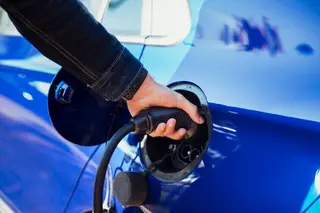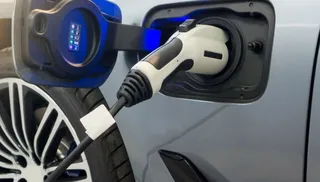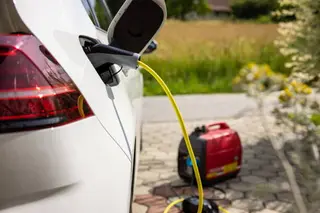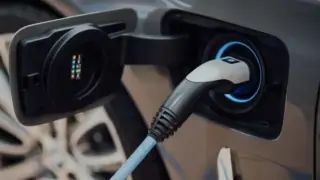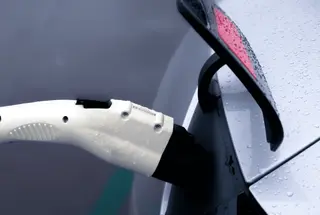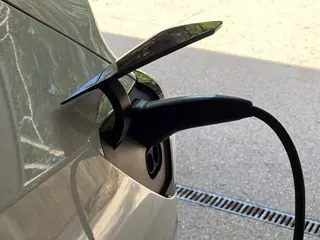How to Keep Your EV Charger from Overheating
Introduction
As electric vehicles (EVs) become more popular worldwide, the importance of safe and reliable charging infrastructure is increasingly critical. One issue that continues to concern EV owners is the risk of overheating during charging. High temperatures in EV chargers can compromise not only the performance of the device but also the safety of the home or facility in which it’s installed.
Understanding the causes and consequences of overheating is essential for ensuring both safe operation and the longevity of your equipment. In this article, we’ll break down the reasons EV chargers overheat, the risks involved, and the practical steps you can take to prevent temperature-related issues—especially at home.

Understanding EV Charger Overheating: Common Causes
There isn’t one single reason why an EV charger might overheat. Instead, multiple factors—ranging from environmental conditions to electrical components—can contribute. Recognizing these risks can help homeowners take preventive measures to protect both people and property.
1. Loose or Corroded Connections
Over time, the electrical connections inside or outside the charger may become loose or corroded. This degradation leads to increased electrical resistance, which in turn generates heat. Left unchecked, these hot spots can escalate into severe hazards.
Routine inspections are crucial. Make sure that plug-in connections are tight, terminals are clean, and wires are properly secured. Even minor corrosion can raise resistance levels and increase the risk of overheating.
2. Overloading the System
Are you drawing more power than your charger is rated for? Overloading the electrical circuit can quickly generate excess heat. This often happens when an EV charger is connected to a shared circuit or a circuit that isn’t designed to handle its power demand.
To mitigate this, always use a dedicated circuit tailored to the charger's specifications, and consult a licensed electrician if you’re unsure of your current setup.
3. Environmental Conditions
Chargers installed in direct sunlight or hot environments are more susceptible to thermal stress. High ambient temperatures limit the charger’s ability to dissipate heat, making it easier for internal components to reach dangerous temperatures.
Outdoor installations should always be placed in shaded, well-ventilated areas. Consider weatherproof enclosures that still allow for adequate airflow and heat dissipation.
4. Cooling System Failures
Modern EV chargers typically include internal cooling systems, like heat sinks or fans, to help manage thermal output. However, when these cooling mechanisms fail or are obstructed—say, by leaves or dust—heat builds up rapidly.
Regular maintenance should include cleaning the vents and fans, especially for chargers installed outdoors or in dusty environments.
5. Faulty Electrical Components
Aging or defective components like capacitors, resistors, and switches can fail over time. When these parts malfunction, they may create unbalanced power flows, leading to unexpected heat generation.
This is where high-quality chargers make a difference. Cheap or uncertified devices may lack sufficient quality control, increasing the likelihood of such issues.
6. Software or Firmware Errors
In today’s smart chargers, software plays a critical role in managing charging cycles and safety systems. Firmware glitches or software bugs can cause chargers to continue operating when they shouldn’t—such as failing to shut off after a full charge.
Be sure to update your charger’s firmware regularly if supported, and opt for brands that actively support over-the-air (OTA) updates and software maintenance.
7. Poor Installation Practices
Incorrect wiring, weak grounding, or non-compliant electrical setups are all installation-related issues that can contribute to overheating. In worst-case scenarios, these can lead to short circuits or even fire.
It’s vital to use certified electricians for installation and to follow manufacturer guidelines precisely. Mistakes made during installation often go unnoticed—until a serious problem occurs.
8. Lack of Routine Maintenance
Like any other electrical device, EV chargers require ongoing maintenance. Without periodic inspections, debris buildup, insulation wear, and unnoticed cable damage can contribute to temperature rise and operational risks.
Make sure to inspect for cracks, exposed wires, and dirt accumulation. Components such as the ground fault circuit interrupter (GFCI) also need regular testing to ensure functionality.
The Dangers of EV Charger Overheating
When temperatures rise beyond safe limits, the consequences can be severe—not just for the charger, but for the vehicle and surrounding environment.
1. Fire Risk
One of the most alarming outcomes of overheating is the potential for electrical fires. Overheated wiring and components can ignite, especially in residential settings where materials like wood or insulation are nearby.
According to fire safety reports, electrical faults are a major contributor to home fires worldwide. For unmanned EV charging stations or outdoor installations, advanced solutions such as the Stat-X condensed aerosol fire suppression system are becoming popular. This system is designed to extinguish electrical fires in their early stages, significantly reducing property damage and downtime.
2. Damage to the EV Charger
Repeated overheating cycles degrade the charger’s internal parts, often causing irreversible damage. Performance suffers, charging speeds drop, and the lifespan of the device is shortened.
3. Harm to the Vehicle Battery
Overheating doesn’t just stay inside the charger—it can affect the battery and onboard charging system of your EV. These repairs can be expensive and, in some cases, dangerous if battery damage leads to thermal runaway.
How to Prevent EV Charger Overheating
Now that we’ve looked at the causes and risks, let’s dive into practical ways you can avoid overheating in your home EV charger setup.
1. Use a Dedicated Electrical Circuit
Never share your EV charger with other high-power appliances. Using a dedicated circuit ensures that the charger receives consistent, uninterrupted power. This significantly lowers the risk of overloading and minimizes heat generation.
2. Install in a Cool, Well-Ventilated Area
Good airflow is key. Whether installed indoors or outdoors, make sure your charger has ample space around it. Avoid placing it near heat sources or in enclosed garages without ventilation.
For outdoor use, invest in a protective but breathable enclosure. It should shield the charger from direct sunlight and rain while still allowing airflow.
3. Choose a High-Quality, Certified Charger
Not all chargers are created equal. Low-cost models may skip safety features or cut corners on quality control. Opt for brands that prioritize durability, safety, and regulatory compliance.
Topper EV chargers, for example, are manufactured using premium materials and undergo strict quality checks. They meet key international certifications such as CE, TUV, FCC, and CCC, ensuring reliable operation in various climates and usage conditions.
Topper chargers also feature IP65-rated waterproof and dustproof protection, guarding against external contaminants like rain, dust, and fog that could lead to overheating or corrosion.
4. Monitor Temperature in Real Time
Advanced EV chargers now include smart temperature management features. Topper EV chargers come equipped with an intelligent all-link temperature control system that continuously monitors the heat levels—from the wall plug to the car connector.
If the system detects abnormal heat rise, it automatically initiates shutdown procedures in under 0.2 seconds, helping to prevent fires or system failures.
5. Conduct Routine Inspections and Cleaning
Even with the best hardware, neglecting maintenance can lead to trouble. Set a schedule for visual inspections, checking for loose plugs, discolored wires, cracks in the housing, or dust accumulation.
Also, test critical safety components regularly—especially the ground fault circuit interrupter (GFCI)—to make sure your charger is still functioning within safe parameters.
Bonus Tip: Smart Charging Solutions
To further enhance safety and energy efficiency, consider using chargers with smart load balancing or OCPP 1.6/2.0.1 compliance, which enable better coordination with your local grid. These features can help prevent charging during peak demand times, reducing thermal stress on the system.
Topper EV chargers support remote monitoring, OTA firmware updates, and customizable user settings, allowing users to manage charging behavior dynamically and safely from a mobile app or backend dashboard.
Conclusion
EV chargers are essential tools for modern mobility, but they can become safety hazards if not properly installed, maintained, or monitored. Overheating is a common yet preventable issue. By understanding its causes—from poor ventilation and loose wiring to low-quality components and firmware errors—you can take effective steps to protect your equipment and your property.
Using certified, high-performance chargers like those from Topper—equipped with real-time temperature management and robust environmental protection—can give you peace of mind and long-lasting reliability. Remember: prevention is always easier and cheaper than repair.
Whether you’re a new EV owner or an experienced user looking to optimize your setup, following these best practices will help you stay safe, save money, and enjoy a smooth, efficient charging experience.
Send your message to this supplier
Related Articles from the Supplier
How to Keep Your EV Charger from Overheating
- Jun 20, 2025
How to Protect EV charging Cable from Theft?
- Sep 09, 2024
How to Get Your Garage Ready for an EV Charger?
- Oct 28, 2025
How to Charge Your Electric Vehicle Faster
- Jun 07, 2025
Related Articles from China Manufacturers
How to Keep Newly Purchased Valves?
- Apr 23, 2021
How to Choose Gaskets for Your Industrial Valves?
- Nov 04, 2025
How to maintain Acetate glasses
- Aug 06, 2021
How to Inspect Steel Pipes
- Dec 03, 2016
How to Tell Marble from Granite?
- Jun 05, 2020
How To Maintain And Clean Ski Goggles
- Oct 13, 2021
Related Products Mentioned in the Article
- www.chinatopper.com
- Address: Xiamen
- Phone: 86-592-5819200
- Business Type: Trading, Industry & Trading, Manufacturer,
Supplier Website
Source: https://ev-charger-china.com/news/how-to-keep-your-ev-charger-from-overheating.html

